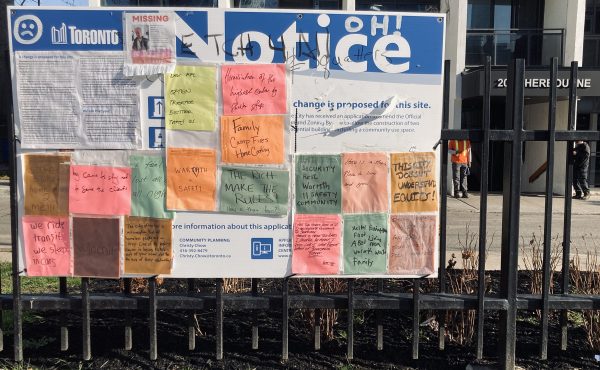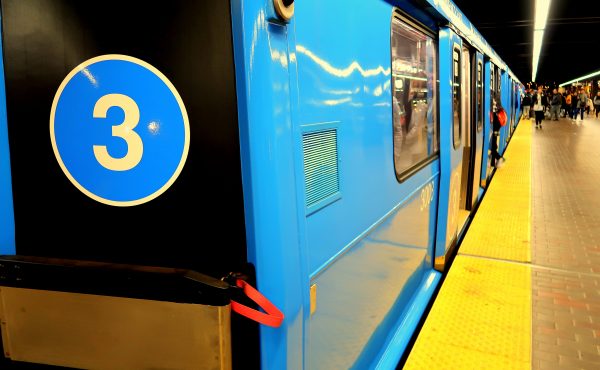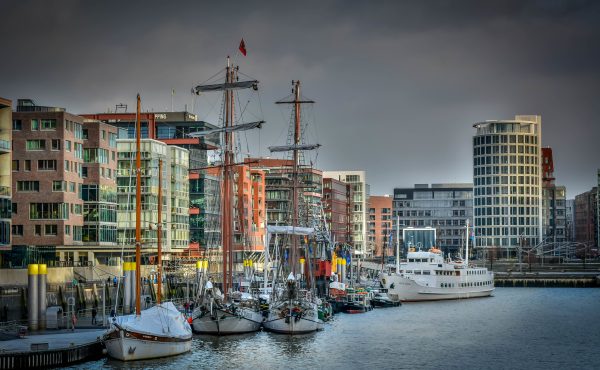I was in my hometown of Brampton twice in the past several weeks to attend two transit open houses: a public information centre for the Hurontario-Main Street Study, and the annual Brampton Transit service plan public consultation. I plan to write more about public transit and land use planning in Peel Region for the next issue of Spacing, but with the presentation boards up on the internet, it is an opportune time to briefly discuss the latest progress.
Over the past 18 months or so, a detailed transportation and land-use study has been commissioned by the cities of Mississauga and Brampton to examine options for higher-order transit along Hurontario and Main Streets. The project team has decided on a Transit City-style light rail line between Downtown Brampton and Port Credit, linking 3 GO Transit corridors and 2 major urban growth hubs. Interestingly, the light rail will leave the median right-of-way in the tight spaces through Downtown Brampton and Port Credit, with street trackage. A bi-directional loop will provide for through service on Hurontario and local service around Mississauga City Centre.
Meanwhile, Brampton Transit will be starting up its quality bus system in September with the launch of “Züm” – a Viva-style network. Each route will offer all-day 15 minute service making limited stops, with fancier buses (unlike Viva, Züm will use Canadian-built New Flyer vehicles) and larger shelters with real-time next bus displays. Despite having fewer bells and whistles (no fare pre-payment, for example) “Züm” has required more construction than Viva. Each intersection on Queen Street has been widened to allow for bus queue-jump lanes to reduce traffic-related delays, and the mostly built third lanes of these wide suburban arterials will be restricted to high-occupancy vehicles. New transit terminals at Bramalea and Shoppers World are also being built as part of the project.
The first Züm route, shown as 501 Queen (!) on the boards at the open house, will run between Downtown Brampton and York University, partially replicating Viva Orange, with an express rush hour branch via Highway 407. (Joint operation of route 77 will end). The next route, Main-Hurontario, coming next year, will run as far south as Square One Mall/Mississauga Centre, a precursor to the proposed LRT. Local buses will continue to operate at somewhat reduced frequencies. A new (and very much welcome) principle at Brampton Transit has been to provide service as far as necessary beyond its municipal borders to serve major trip generators to minimize transfers and improve connections; Züm and the existing 101 Airport Express route illustrate this.
Meanwhile, Brampton continues to tinker with its conventional bus service, for which a number of improvements will also be coming in September. Finally all core routes will have a minimum 30 minute headway during service hours, eliminating a lot of (but not all) “40s” and “45s” from the schedule guide, providing at the least, clockface, consistent schedules that hopefully drive off-peak transit usage.
The boards for “Zum” and other route changes is posted here (warning: 65MB PDF)
There’s always room for improvement. The changes won’t yet live up to the new TTC service standards, but for an auto-centric suburb that’s only now just focusing on transit and urban development, it’s not bad. And while the city is pushing for high density development downtown and in a few other selected areas, new sprawling subdivisions continue to be built on the periphery. But Brampton is only one of a few GTA transit authorities consistently improving transit service (the other standout is Oakville), and has avoided cutbacks.
The planning for the Hurontario LRT is still going ahead. It remains one of the priorities in the Metrolinx 15-year plan, but with the recent kick in the teeth delivered by the province with regards to Transit City, one wonders if other projects awaiting funding such as Hurontario will go ahead anytime soon, even in “battleground 905”.
It would be a shame, as the Hurontario LRT would be a milestone for suburban transit, where it often takes a back seat to the automobile and has traditionally not been a top priority. The joint study and planned operation is also welcome as the the suburban municipalities have traditionally been in competition with each other. I thought Miller should have tapped into the suburbs and other cities planning major transit projects, such as Hamilton, Ottawa and Waterloo Region, to present a united front to the province to ensure all of these worthy projects go ahead.





11 comments
Too little, too late.
Never too late.
Density is an issue that won’t be overcome: too late.
This will not be like transit city. The stops on this line will be one to two kilometers apart on average. Transit city will be half that, tops.
If you actually look at the character area boards, it looks like there will be considerably greater densities along the route in Mississauga and Brampton. Also, this is far better than the ‘do nothing’ alternative and is a first step towards more liveable suburbs.
But if you look at the actual stops, half of them probably won’t be used very often. It’s an option to stop.
It could be like the GRT (Waterloo region) iXpress BRT, which has a stop at the hospital or this stop south of the transit terminal, but only rarely ever actually stops there.
yes, too late.
because we all know cities are entities of form that are completely static in their nature…
There is alot of apartments & condos along Hurontario between the Queen E & upper Mississauga. The current MT 19 bus has horrid service, but the route is still well used. LRT from Port Credit to Brampton makes sense.
THere are alot of apartments in Brampton as well, but I don’t know how close most of them’ll be to major intersections. The commercial strips in Brampton are abominable however. Much like Queensway west of Kipling in Toronto, it doesn’t support much transit use.
All those parking lots along Hwy 10 will look a lot more attractive to developers once the LRT goes in. Build the transit, and the density will come.
@Divyesh Mistry
The current Sheppard bus already regularly stops more than 5 times per city block. By reducing the stops to 5 per block (2 at the ends, 3 in the middle), not to mention the proposed increased densities, it will be very seldom that any stops are missed. This wouldn’t be a problem, but these middle stops will probably only have a few people getting on and off at a time.
I’m not against Transit City per se, these lines will offer an improvement to what is already there. But I do feel it is a missed opportunity to have rapid, subway like service across the city (as the city claimed them to be). Instead, we are getting nothing more than enhance local feeder routes, with a multi-billion dollar price tag.
At least Peel Region is going to show the GTA how to do LRT right.
Finally–the hope for decent service between Brampton and Square One! I grew up in Brampton and come home frequently to visit family in Brampton and Mississauga. I can’t believe how hard it is to get around in those cities without a car.